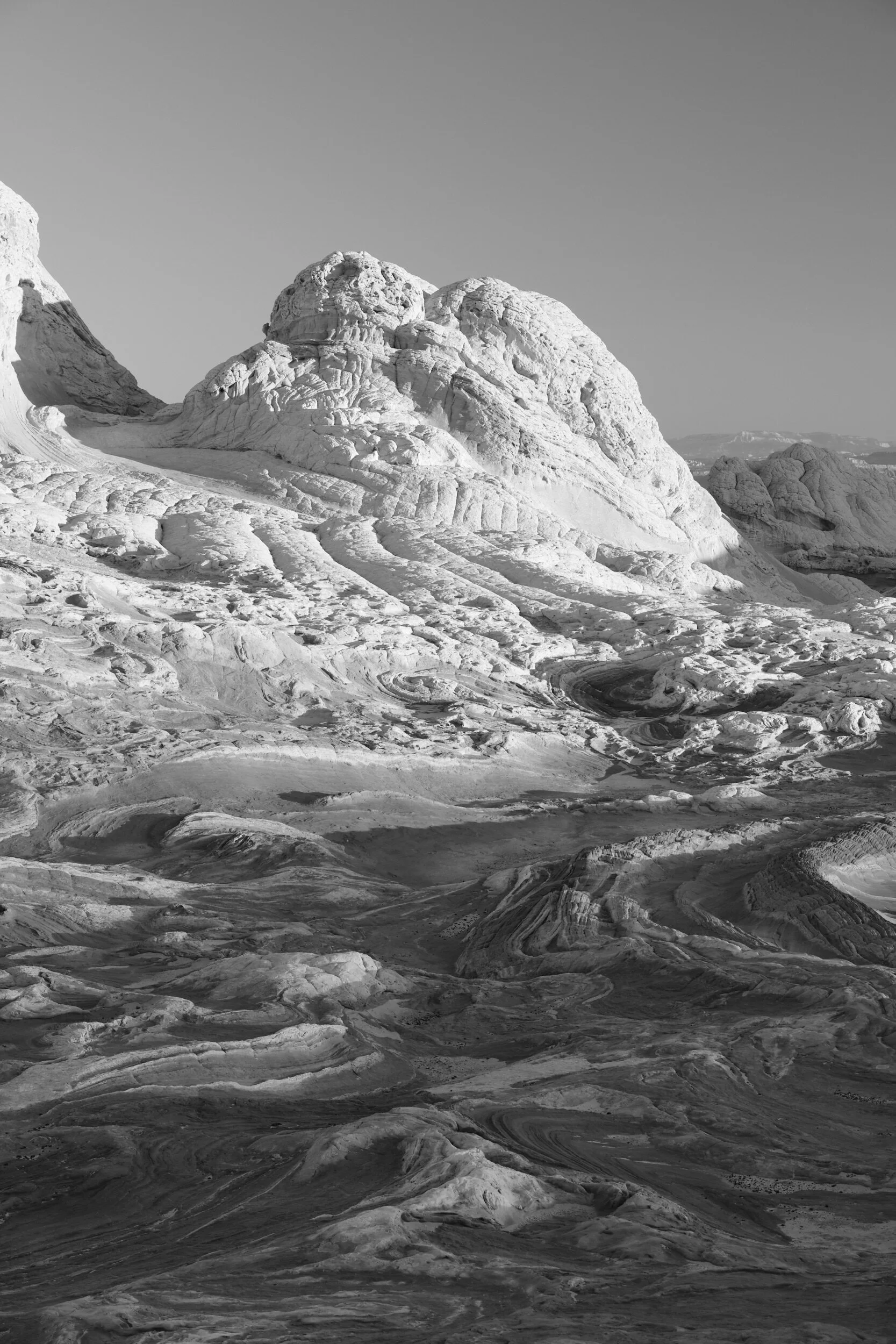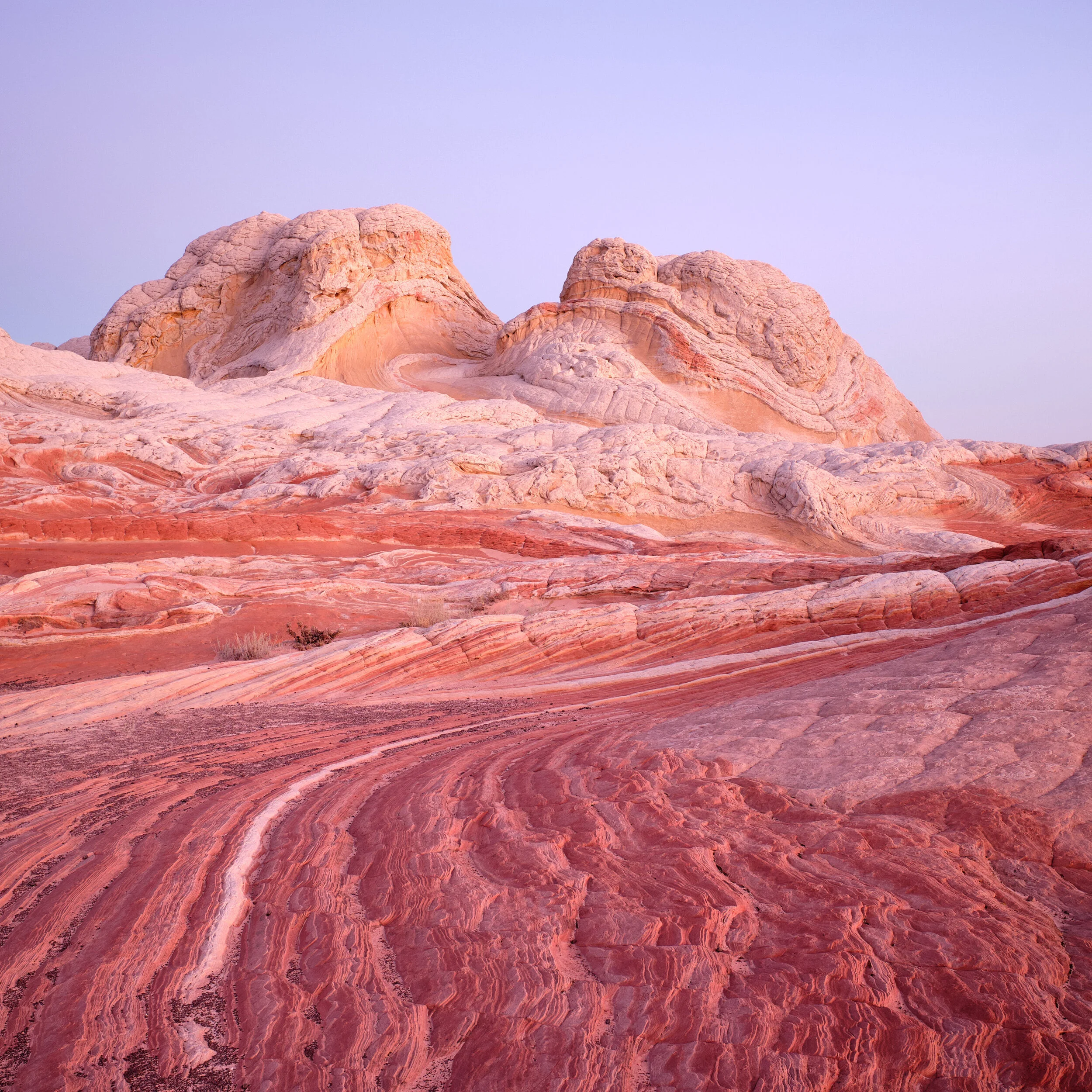Printing the Image - November 3, 2019
We finally got around to printing this weekend, our first images from the trip. As usual, Ann wasn’t sure she had anything worth printing (as usual, she was wrong), and I wound up printing images that have already appeared on the blog post. Fortunately, I managed to work on a new image as well and and, most importantly, the printer heads had not clogged even after such a long break. So how did they turn out?
The first image is one of Ann’s from the morning we were photographing at Factory Butte. The light that morning was simply stunning and was constantly changing. Ann actually captured a moment of light that I missed. It’s not that I didn’t notice it, but it lasted for such a short period that I couldn’t compose and make an image before it disappeared. But Ann didn’t miss it.
There was this moment when the light turned yellow and these formations simply started glowing. In printing the image we tried a couple of different papers. A glossy baryta paper really brought out the textures of the hills, but had lost a bit of the quality of the light that makes this image special. Now the matte fine art paper was a different story. That paper with its subdued tones and gentle texture brought out the ethereal quality of the image that we had seen on Ann’s screen and that had been there that morning. Finding the right paper really does make a difference.
Ann’s next image was from our morning photography session at White Pocket. As she did several times during the trip, Ann had set her camera to show her a black and white image on her LCD screen and used a special viewing filter that helps image making in black and white to identify areas that may work well tonally. Personally, I think it was a great decision for that morning, especially once the sun started rising. This image is a perfect example of why White Pocket, despite all of its color, can be a black and white paradise.
The thing I love best about this image is how Ann has managed to capture that moment where the shadow rocks begin to reflect the bright sky, moments before they’re flooded with light. That shadow lower part of the image simply glows in the print. This is one image where the baryta paper comes into its own. It’s such a beautiful print.
The image I worked on that morning was also from White Pocket, just taken a bit earlier than hers. It even has the same background rocks as Ann’s image. What’s so interesting is that her image is actually in my image, but the textures look so different! Mine, of course is in color and it captures that same foreground effect where the edges of the foreground rock is reflecting the bright morning sky.
You can see why I made the image in color. The color of the sky and the rocks there was simply stunning. That’s another reason why I give Ann so much credit for photographing in black and white. That morning, I just couldn’t bring myself to do that. I guess there’s always next time to focus on black and white at White Pocket.
The next two images were ones that I worked on for the blog post (though I had to re-work them on my home computer - the blog post used images I had downloaded and developed on my laptop). The first is from Zion NP and is the one image where I feel like I captured the feel of the place that morning.
Both Ann and I had the same reaction when the print came out of the printer - wow. The print really captured the spacious layering of the tree, close cliff and more distant cliff. It has an openness that often doesn’t come across in a print; it sure did this time.
The last image I printed was the pre-dawn image of the moon at Goblin Valley State Park.
I learned a real lesson with this image, which led me to print the image fairly small - 4” square on 5x7 paper. Unfortunately, my sensor was filthy (which happens when you mindlessly change lenses a lot when there’s blowing sand around). Long story short is I found out that in Capture One, you can only “spot” out 100 spots. Well, that was good enough for the dark clouds, but only good enough to also cover a few of the spots in the dark landscape. If you look closely, you’ll see pin-pricks of light in the lower half of the image, lots of them! I should have been better about changing lenses in the field! I remember resorting to blowing on my sensor a couple of times this trip when I noticed I had a filthy sensor. Apparently, that morning wasn’t one of those days. As much as I’d like to see the image printed larger, the spots would be obvious and take away from the effect. Still, I enjoy the image and, who knows, I may figure out how to trick the program into letting me add even more spots!.
Well, that’s it for now. We’re still going through our images from this trip (which can be a very depressing process), but in a few weeks I’m sure we’ll find more images to work on and then it will be time to print again.




